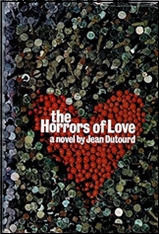Fri 18 Apr 2025
Locked Room PI Stories I’m Reading: BILL PRONZINI “Cat’s Paw.”
Posted by Steve under Stories I'm Reading[2] Comments

BILL PRONZINI “Cat’s Paw.” Nameless PI. First published in separate form by Waves Press, hardcover, 1983. Reprinted several times, including in The Eyes Still Have It, edited by Robert J. Randisi (Dutton, 1995). Shamus Award winner for Best Short Story.
PI stories make up a sizable chunk of the world’s supply of published mystery and detective fiction. There are fewer locked room mysteries, but there’s a sizable amount of them. And of course, as all you already know, the Venn diagram circles for each of these two subgenres, as we shall call them, do overlap.
And while I’ve never made a count, I’m willing to wager that over half of those stories that exists in that aforesaid overlap section were written by Bill Pronzini.
This is one of them. And it’s a good one.

Pronzini’s nameless PI has taken a side job helping guard the expansive grounds of a zoo which has been the victim of several recent robberies. Some of its more valuable birds and animals have gone missing. On the night the story takes place, something more sinister happens. Another guard is found dead in the lions’ cage, shot at close range, but … the cage doors are locked, with the only accessible entry being through the grotto where the lions stay overnight. No way in, without keys, and no way out. Not even for the most expert of thieves.

It is a puzzle. I stopped reading at this point and waited two evenings before getting on to the solution. The extra time? It didn’t help. Didn’t even come close.
It’s a complicated solution, and as usual when it comes to locked room mysteries, explaining it all in the requisite detail is the weakest part of the tale. At least for me. But the clues are there, and with them in hand (and properly noted) the case is wrapped up as tight as a drum.
As I said there up above, this one’s a good one.


















